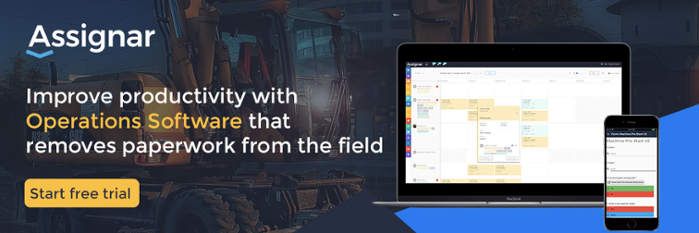Establishing Accurate Accounting For Labor Costs In The Bid-Focused Construction Environment
During the implementation of a reliable job costing process, every industry endures some measure of complication. But accounting for labor costs in the construction industry involves balance within an ever-changing bid-focused environment. Each new job activates a new base of profit-management, customized labor dispatch and job-specific deployment of assets. The concept of a solid general ledger cannot meet the ebb and flow of bid-focused construction job costing. Successful accounting for labor costs in the construction industry demands application of an industry-specific accounting solution.
The following tips will help you implement a better path toward reliable job costing.
Better Construction Job Costing Requires Reliable Labor Cost Analysis
Tracking job-specific labor hours is not so easy as tying down precise material expenses, nor is tracking site-related labor hours so easy as is tracking site-specific equipment usage. Unlike sales-oriented product accounting, construction labor costing may involve multiple workers spreading labor hours between multiple job sites. Enter then the importance of modern construction-based workforce and asset allocation and planning technology. It’s the cloud-based solution for reliable accounting for labor costs in construction. It’s integrated construction contractor software that simplifies the complexities of:
- Data collection, organization and reporting
- Real-time construction job costing
- Job-specific payroll management
- Efficient dispatch of workers and assets
- Reliable tracking and reminders concerning documentation, licenses and certifications
- AND much, much more.
1) The Construction Accounting Upgrade Process – A Broad Stroke Approach
Moving into a tech-based application should be accomplished in stages, the broad stroke rather than the massive overnight overhaul. At first startup, many contractors are overwhelmed by the abundance of features available in a tech-based construction-focused job costing system. It’s not that the software is difficult to learn; it’s just that it takes time to transfer existing data and even to accumulate new data. The successful upgrade involves review, training, oversight, and a gradual implementation.
2) Focus On Accounting Matters Most Important To Immediate Needs
Digital construction job costing tools enable multi-level data entry, data accumulation and data analyzing. Yet successful implementation of advanced accounting for labor costing in construction must first aim for the components most necessary to major job-costing reporting. Seek out the points pertaining to:
- Estimated hours
- Actual incurred hours
- Job-to-date hours
- Specific reporting periods
- And variance analysis on a per job basis.
Workforce And Asset Allocation And Planning Software Makes The Difference
Bringing accounting and construction job costing together in one package simplifies the implementation. Successful accounting for labor costs in construction depends on worker-access to relevant timekeeping reporting processes as well as access to site-specific documentations. It also depends much on the adaptability and modularity of the accounting software.
For this reason, the Assignar workforce and asset allocation and planning software has proven to be a top choice among worldwide construction contractors. Learn how Assignar reduces labor costs. Take a trial run today.






